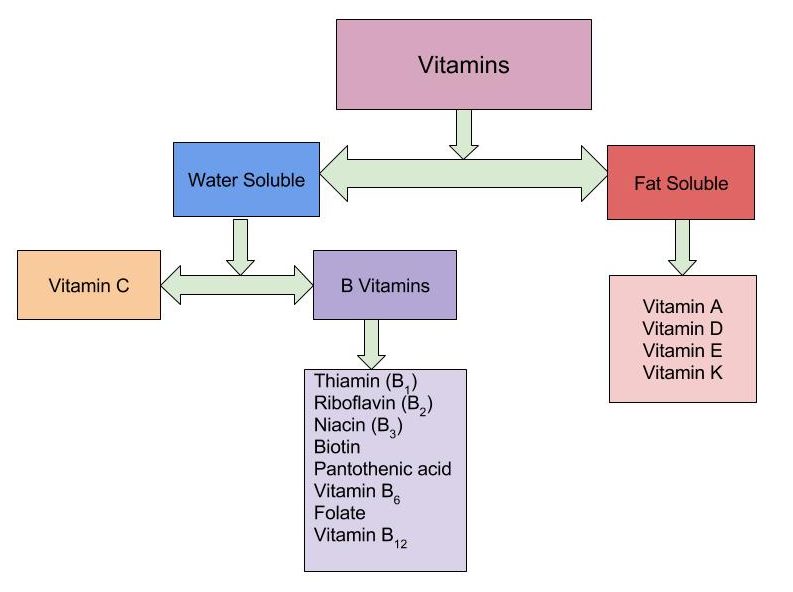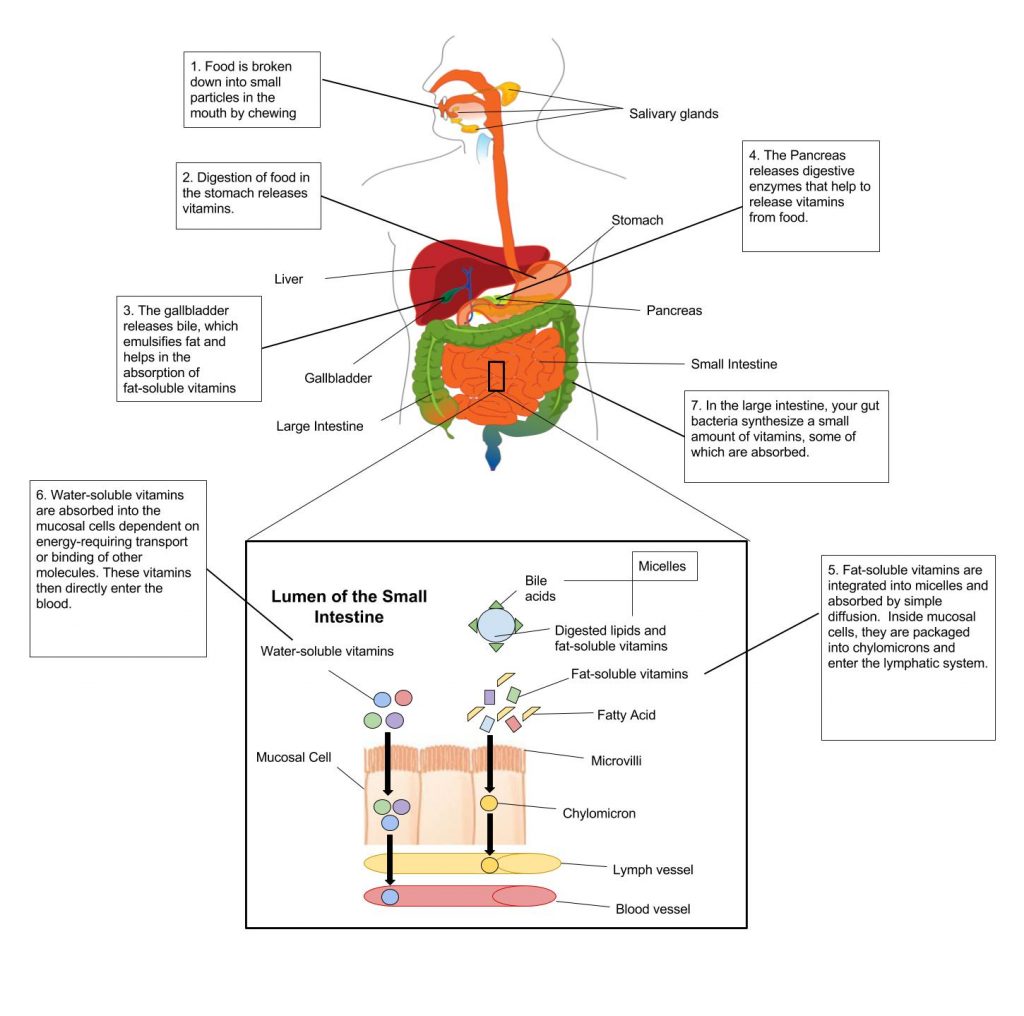Introduction
Learning Objectives
By the end of this chapter, you will be able to:
- Describe the role of vitamins as antioxidants in the body
- Describe the functions and sources of antioxidant micronutrients, phytochemicals, and antioxidant minerals
- Describe the functions of vitamins in catabolic pathways, anabolic pathways, and blog
Vitamins are organic compounds that are traditionally assigned to two groups fat-soluble (hydrophobic) or water-soluble (hydrophilic). This classification determines where they act in the body. Water-soluble vitamins act in the cytosol of cells or in extracellular fluids such as blood; fat-soluble vitamins are largely responsible for protecting cell membranes from free radical damage. The body can synthesize some vitamins, but others must be obtained from the diet.

One major difference between fat-soluble vitamins and water-soluble vitamins is the way they are absorbed in the body. Vitamins are absorbed primarily in the small intestine and their bioavailability is dependent on the food composition of the diet. Fat-soluble vitamins are absorbed along with dietary fat. Therefore, if a meal is very low in fat, the absorption of the fat-soluble vitamins will be impaired. Once fat-soluble vitamins have been absorbed in the small intestine, they are packaged and incorporated into chylomicrons along with other fatty acids and transported in the lymphatic system to the liver. Water-soluble vitamins on the other hand are absorbed in the small intestine but are transported to the liver through blood vessels.

Chapter Attribution
Chapter 10 Introduction in Human Nutrition in a Canadian Context by Karine Hamm published by BCcampus in 2021 under a CC BY License.

